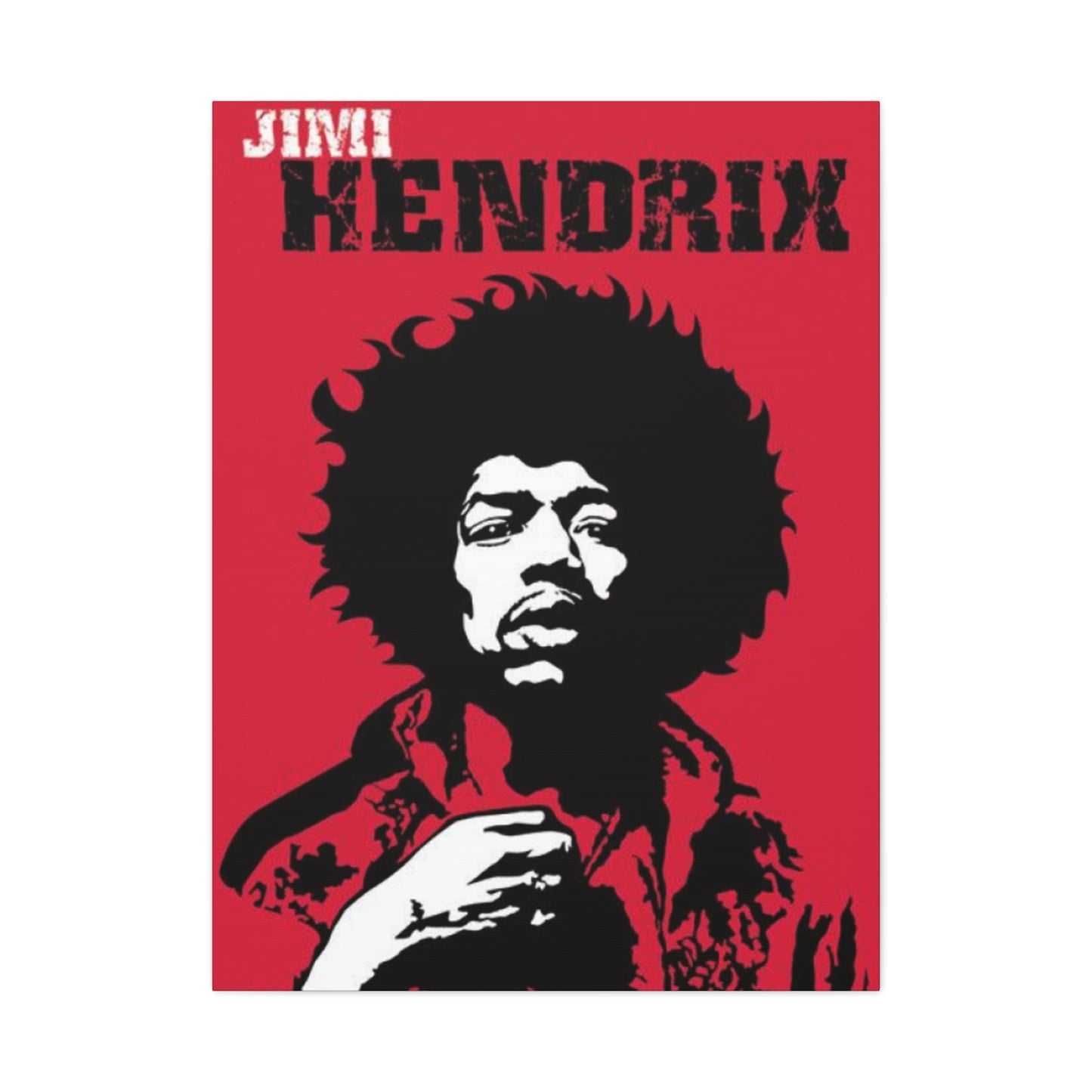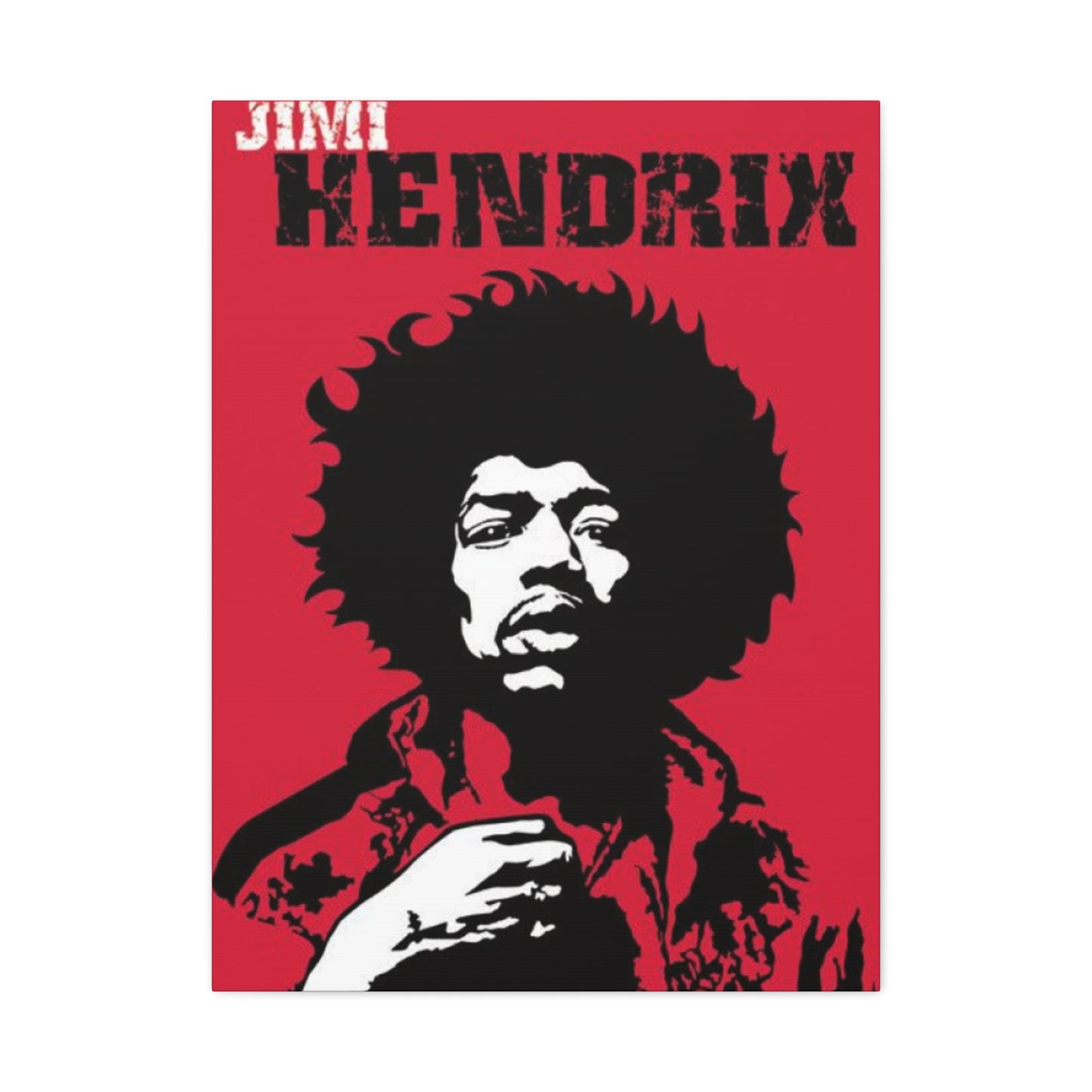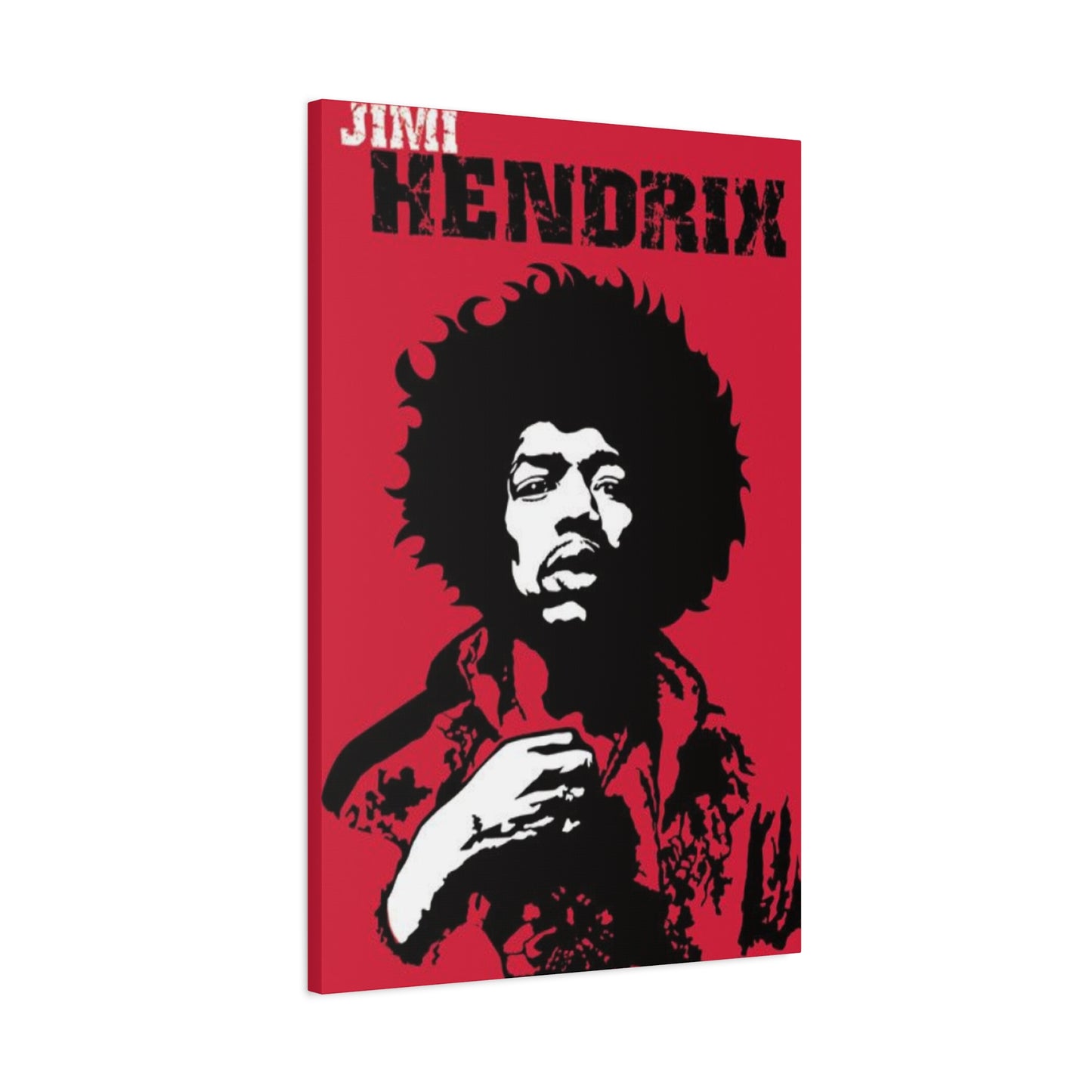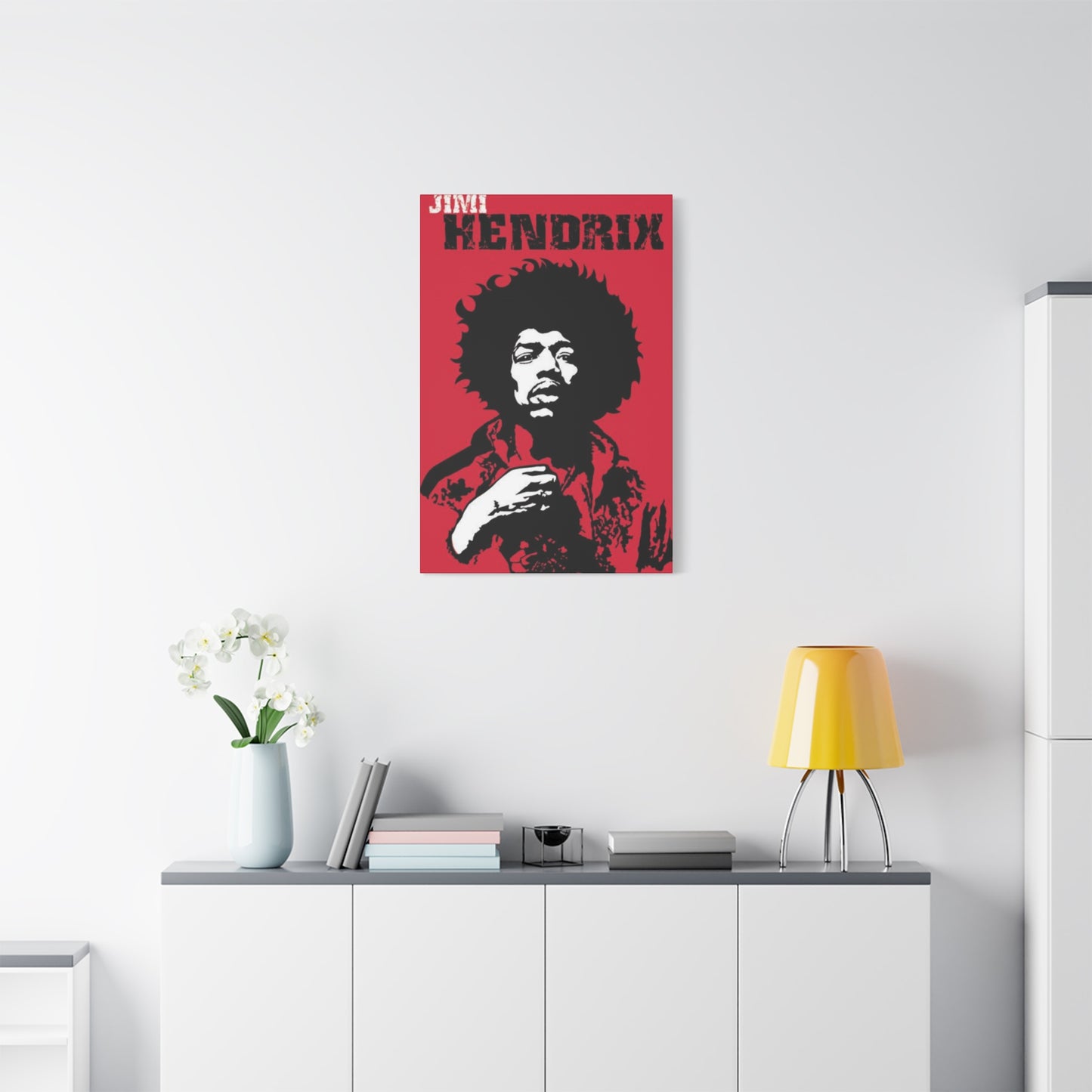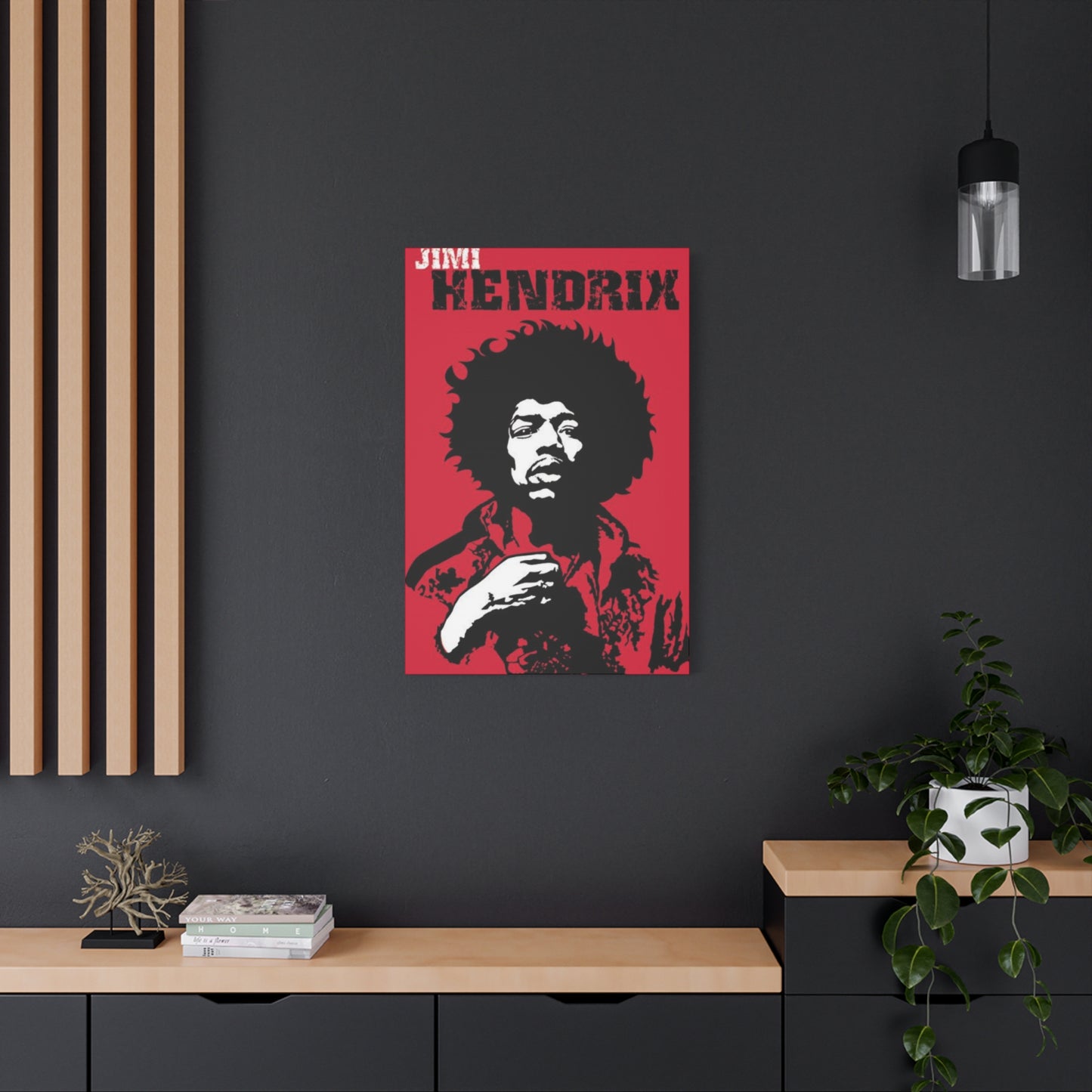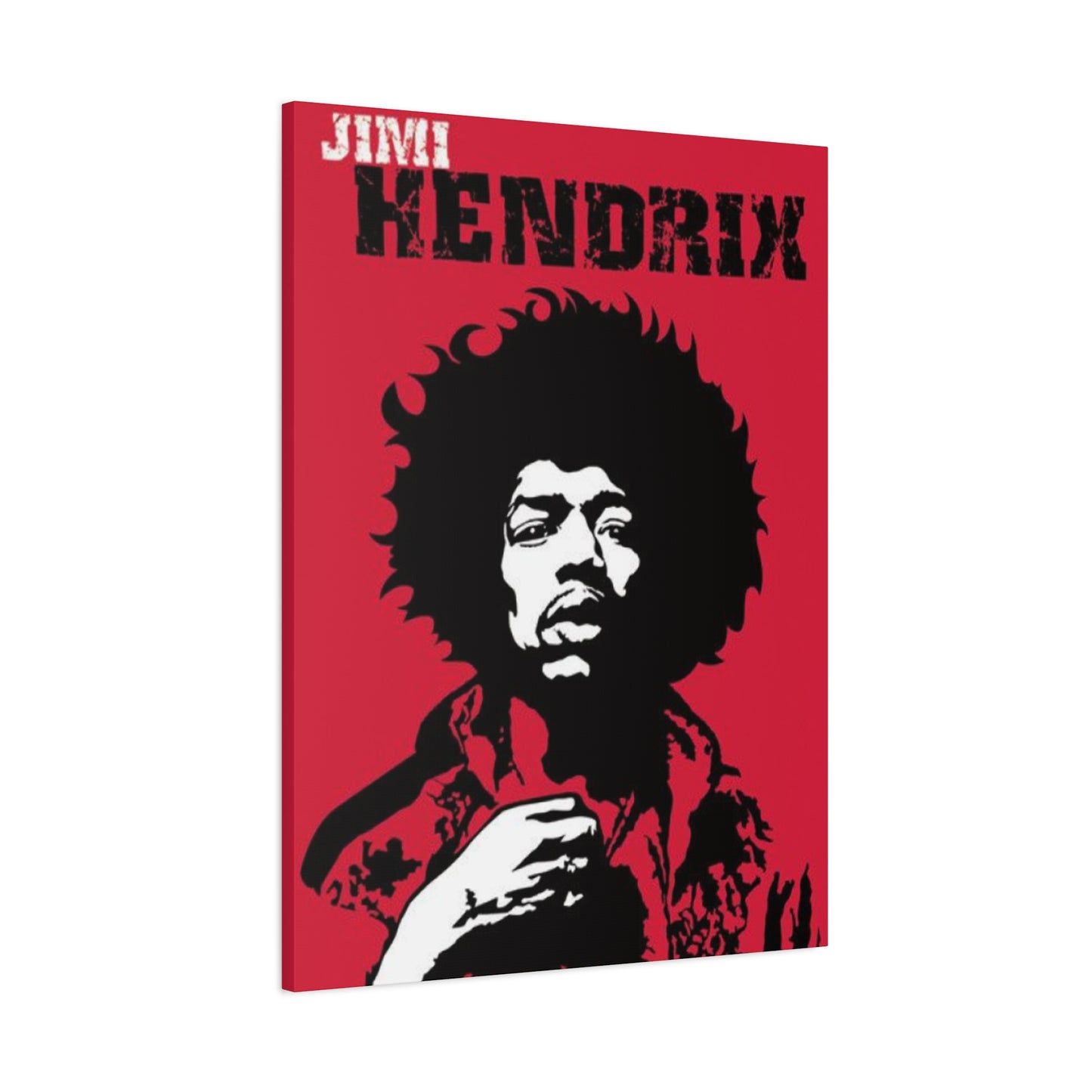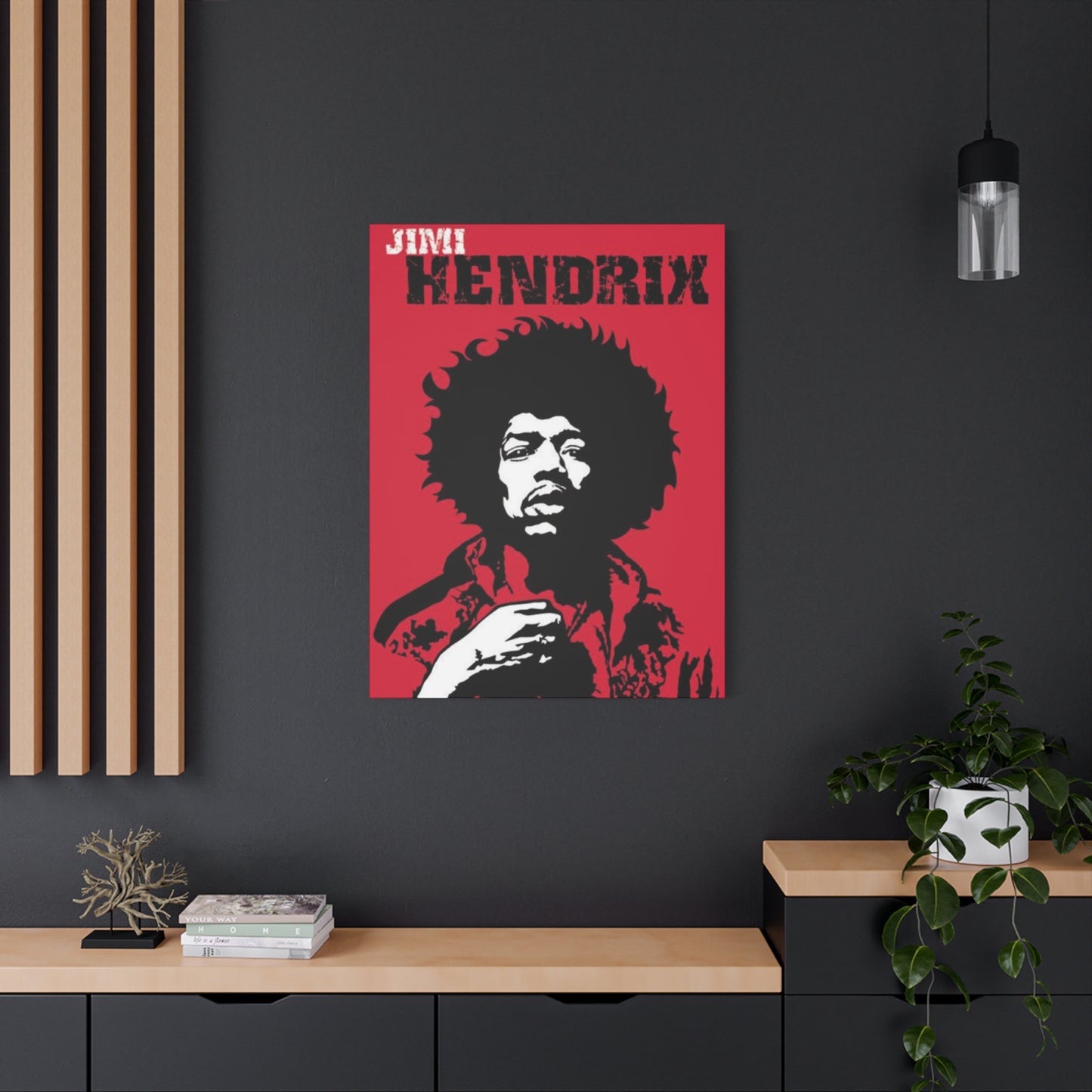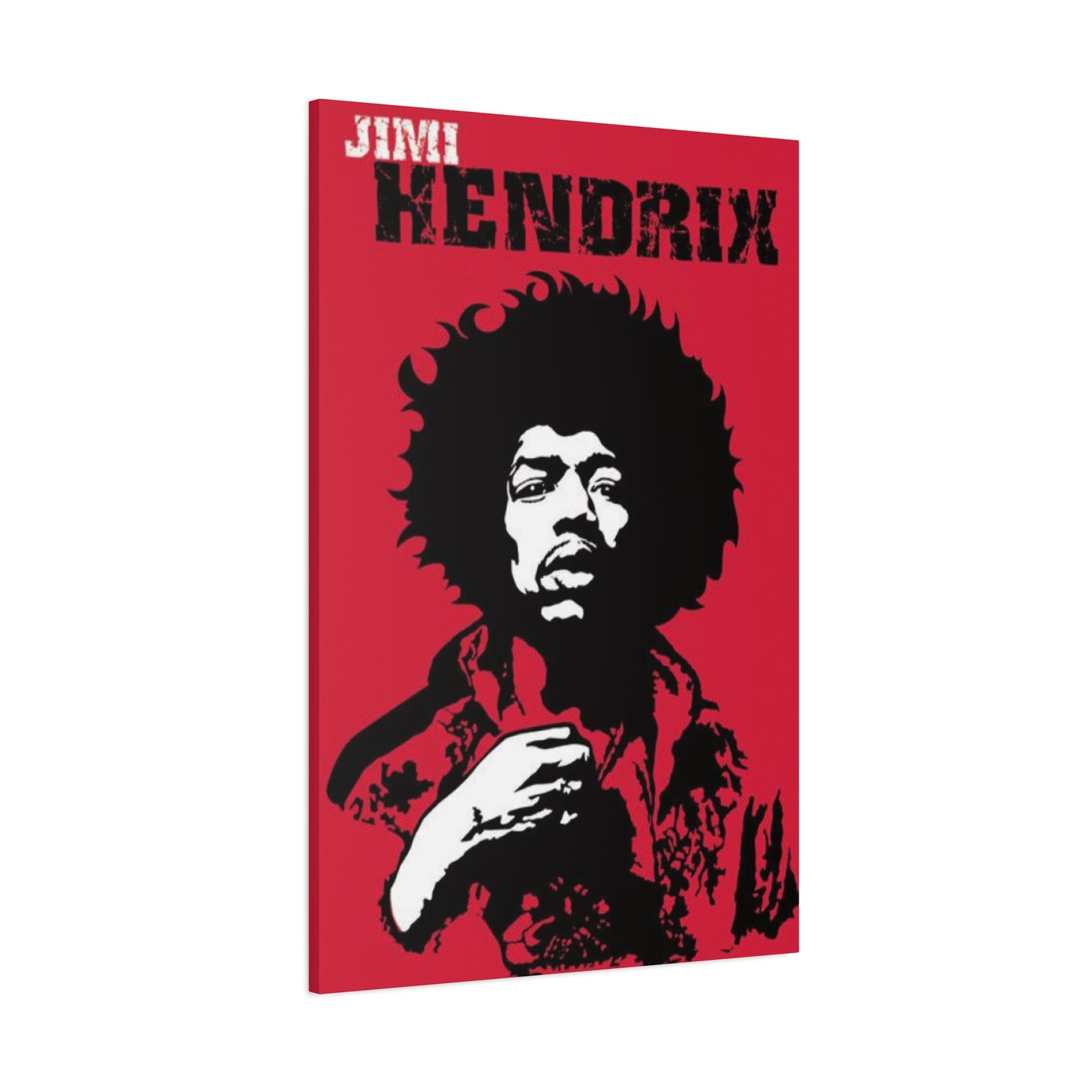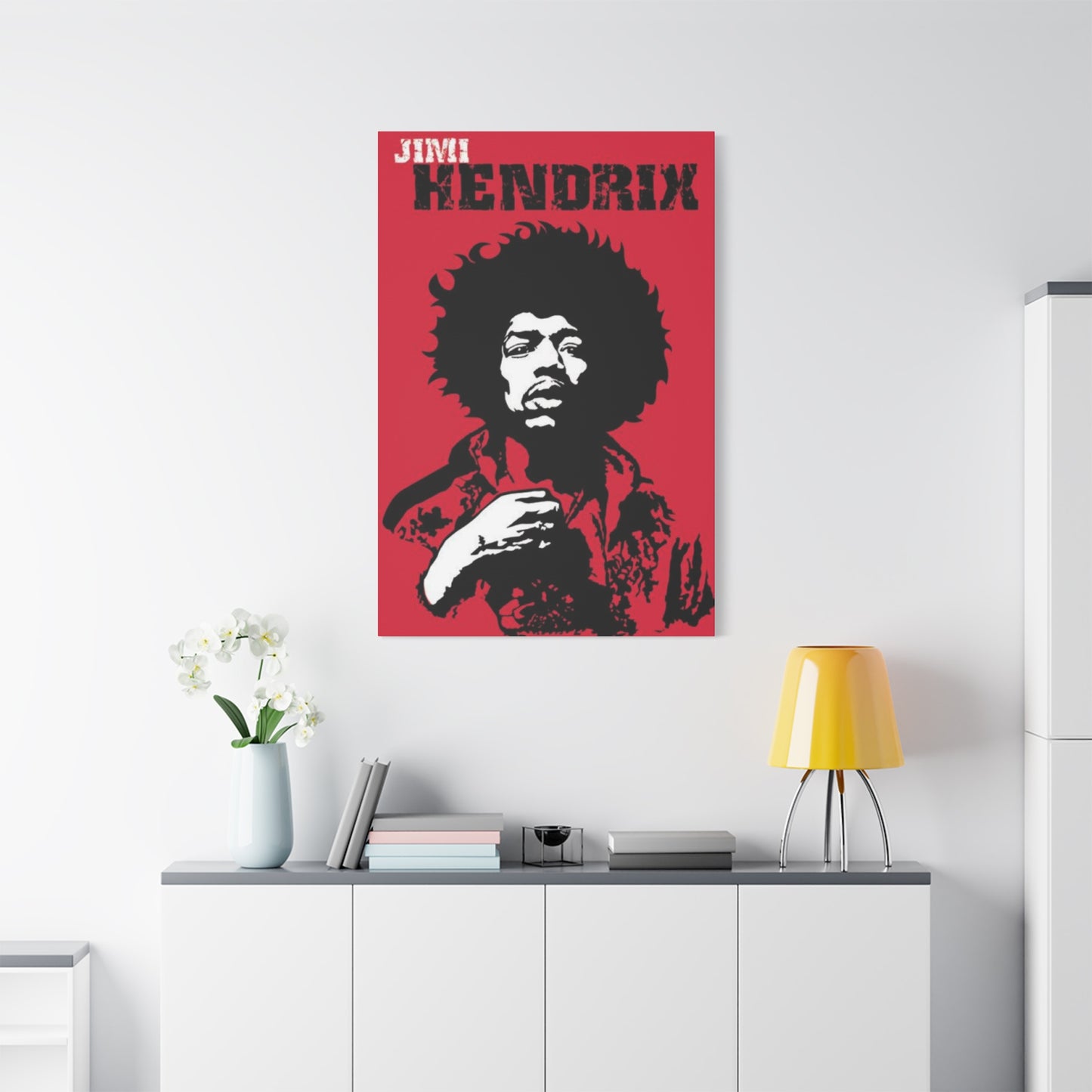Rock ’n’ Roll Elegance: Red Jimi Hendrix Canvas & Poster Wall Art
The intersection of music, art, and interior design has created something truly remarkable in the world of home decoration. Red Hendrix represents far more than just a simple wall hanging or poster. It embodies the spirit of musical revolution, artistic expression, and the timeless appeal of one of rock and roll's most influential figures. When we speak about Red Hendrix wall art, we're discussing a phenomenon that has captured the imagination of music enthusiasts, art collectors, and interior designers around the globe.
The concept of Red Hendrix wall art emerged from the desire to celebrate the life and legacy of Jimi Hendrix through vibrant visual representation. The red color palette chosen for these artworks isn't arbitrary; it symbolizes passion, energy, rebellion, and the fiery spirit of rock and roll itself. Throughout decades of popular culture, red has consistently been associated with intensity, emotion, and the raw power that defined Hendrix's musical contributions. When combined with iconic imagery of this legendary guitarist, the result is wall art that doesn't simply decorate a space but transforms it into a personal statement about artistic appreciation and cultural significance.
For many people, choosing to display Red Hendrix wall art in their homes or offices represents more than an aesthetic decision. It's an acknowledgment of the cultural impact that Jimi Hendrix had on music history. His revolutionary approach to guitar playing, his innovative recording techniques, and his charismatic stage presence continue to influence musicians and inspire audiences more than fifty years after his peak years. By incorporating Red Hendrix wall art into interior spaces, individuals create visual anchors that remind them daily of artistic excellence, creative courage, and the transformative power of music.
The evolution of Red Hendrix wall art reflects broader changes in how we consume and appreciate art. What began as simple concert posters and printed reproductions has evolved into sophisticated artistic interpretations, limited edition prints, canvas works, and digitally created pieces. Modern Red Hendrix wall art encompasses various artistic styles, from photorealistic representations to abstract interpretations, from vintage-inspired designs to contemporary digital artwork. This diversity ensures that regardless of personal taste or decorating style, there's a Red Hendrix wall art option that can seamlessly integrate into any living space.
Bold Art for Rock Souls
Creating a space that reflects your authentic self requires courage, commitment to artistic expression, and a willingness to embrace bold design choices. Bold art for rock souls goes beyond simply selecting artwork that matches furniture or follows current decorating trends. It involves making intentional choices that declare something fundamental about who you are, what you value, and how you want to feel when you inhabit your personal space. Red Hendrix wall art epitomizes this philosophy perfectly, offering rock enthusiasts a way to surround themselves with visual representations of the music and values they hold dear.
The concept of bold art resonates particularly strongly with rock music enthusiasts because rock itself has always been about boldness. From its earliest days, rock and roll represented a departure from musical convention, a willingness to challenge established norms, and an embrace of emotional authenticity. Jimi Hendrix embodied these qualities perhaps more completely than any other figure in music history. His approach to the electric guitar was revolutionary, his performance style was fearless, and his artistry pushed boundaries in ways that seemed impossible before he demonstrated them. When rock souls choose to display Red Hendrix wall art, they're making a statement that aligns with these values.
Bold art functions differently in a space than subtle, neutral decoration. While minimalist approaches have their place and merit, bold artwork creates focal points that immediately draw attention and establish the character of a room. Red Hendrix wall art accomplishes this with remarkable effectiveness. The vibrant red color palette demands attention, while the iconic imagery of Jimi Hendrix immediately communicates the artistic intentions behind the display. Visitors to a space featuring bold Red Hendrix wall art immediately understand something important about the person inhabiting that space: they appreciate artistic excellence, they're willing to make distinctive design choices, and they value authenticity over conformity.
Retro Energy in Red Tones
The power of retro aesthetic lies in its ability to evoke nostalgia while remaining completely relevant to contemporary life. Retro energy in red tones creates a particular kind of visual experience that combines the comfort of familiar styles with the vitality of energetic color. Red Hendrix wall art excels at this balance, drawing from artistic conventions and visual languages of multiple decades while presenting them through vibrant red color palettes that feel immediate and alive. Understanding retro energy requires appreciating how past artistic movements continue to influence and inspire modern creative expression.
Retro design has experienced remarkable longevity in popular culture, cycling through periods of dismissal and re-appreciation. What was once considered dated becomes fashionable again, then falls out of favor, then returns with fresh perspective. This cyclical nature reflects something fundamental about human psychology and our relationship with visual culture. We simultaneously seek the familiar comforts of design we recognize from our past while craving the excitement of new discoveries and contemporary approaches. Red Hendrix wall art bridges this gap beautifully, offering designs that feel historically informed while remaining visually engaging to modern audiences.
The 1960s and 1970s, the decades most associated with Jimi Hendrix's career and cultural impact, developed distinctive visual languages that continue to influence design today. Psychedelic poster art, concert photography aesthetics, vinyl record cover designs, and stage lighting approaches all contributed to a visual culture that defined that era. Red Hendrix wall art frequently draws from these visual traditions, incorporating color palettes, design principles, and compositional approaches that immediately signal that retro energy. When displayed on contemporary walls, these pieces create interesting temporal bridges, connecting past and present while celebrating the artistic innovations that emerged during Hendrix's lifetime.
Retro energy in red tones specifically references the emotional and psychological associations of the color red combined with vintage design sensibilities. Red, throughout history, has carried meanings of power, passion, danger, and vitality. In retro design contexts, red becomes a statement of artistic confidence and emotional intensity. When applied to Red Hendrix wall art, these red tones anchor the imagery in a visual language that feels both historically authentic and emotionally resonant. The combination creates work that respects the past while refusing to feel imprisoned by it.
Hendrix Vibes for Modern Walls
Bringing Hendrix vibes into contemporary interior spaces requires understanding how to translate the raw energy and artistic essence of this legendary musician into visual forms that feel at home on modern walls. Hendrix vibes transcend simple nostalgia; they represent a particular quality of artistic fearlessness, creative authenticity, and emotional intensity that continues to resonate with audiences regardless of when they're experiencing it. Modern wall art featuring these vibes successfully bridges the gap between historical significance and contemporary relevance, creating pieces that enhance rather than merely document.
Contemporary interior design has become increasingly eclectic, with individuals drawing inspiration from diverse sources and time periods to create personal spaces that reflect their unique identities. Within this context, Hendrix vibes on modern walls represent more than decoration; they become statements of artistic values and personal philosophy. The modern wall is increasingly understood as a canvas for personal expression, a space where inhabitants can curate visual experiences that nourish their creative spirits and communicate their priorities to visitors. Hendrix vibes accomplish this mission with remarkable effectiveness, offering imagery and energy that feels both historically informed and urgently contemporary.
The translation of Hendrix vibes to modern wall art requires careful consideration of how to maintain artistic authenticity while adapting to contemporary aesthetic standards and technical possibilities. Modern wall art benefits from advances in printing technology, digital design capabilities, and material innovations that were impossible during Hendrix's lifetime. Contemporary artists creating Hendrix-inspired work can leverage these technological advantages while remaining true to the artistic principles and emotional energy that defined Jimi Hendrix's original contributions. The result is wall art that honors the past while fully embracing the present.
Hendrix vibes manifest in modern wall art through various aesthetic approaches and visual languages. Some contemporary pieces emphasize the psychedelic aspects of 1960s visual culture while updating the color palettes and compositional approaches to feel fresh and current. Other pieces take more minimalist approaches, reducing Hendrix imagery to essential elements and playing with negative space in ways that feel distinctly contemporary. Still others experiment with mixed media approaches, combining photographic elements with digital manipulation, paint, or other materials to create layered visual experiences. This diversity ensures that regardless of a person's contemporary aesthetic preferences, there's a way to incorporate Hendrix vibes into their modern walls.
Fiery Tribute to a Guitar Legend
The term tribute encompasses far more than simple imitation or reverence; it represents an active engagement with artistic legacy, a choosing to honor excellence and innovation through thoughtful appreciation and celebration. A fiery tribute to a guitar legend like Jimi Hendrix requires artistic work that captures not just his appearance or basic iconography but the essence of his artistic contributions and the revolutionary impact he had on music history. Fiery tribute wall art creates visual experiences that kindle the same excitement, passion, and sense of possibility that Hendrix's music inspired and continues to inspire in audiences worldwide.
Jimi Hendrix's status as a guitar legend rests on multiple foundations of achievement and innovation. His technical mastery of the instrument was extraordinary, featuring novel playing techniques, groundbreaking use of effects and amplification, and an approach to composition that expanded what seemed possible on electric guitar. Beyond technical achievement, Hendrix possessed an intuitive understanding of how to translate emotional experience into musical language, creating works that remained musically sophisticated while remaining emotionally accessible and powerful. A fiery tribute to this guitar legend must acknowledge all these dimensions of achievement while creating artwork that resonates emotionally with viewers.
The color red in fiery tribute wall art serves multiple symbolic purposes simultaneously. Red represents the fire and passion that Hendrix brought to every performance, the heat of creative intensity that drove his artistic development, and the revolutionary fervor that characterized the era in which he worked. Red also connects to the physical reality of stage performance, particularly the lighting used in rock concerts and the way stage lights often created red and orange tones across performers and instruments. By employing red as a dominant color in tribute wall art, contemporary artists create visual languages that evoke performance energy, creative passion, and the raw intensity of live rock music.
A fiery tribute to a guitar legend often incorporates imagery that specifically references iconic moments in Hendrix's performance history. The image of him playing his Fender Stratocaster, often left-handed and upside down, became one of rock's most instantly recognizable visual symbols. The sight of his distinctive silhouette against concert lighting, his characteristic playing postures, and his expressive facial expressions during performance all provide rich material for artists creating tributary work. When rendered in fiery red tones with dynamic compositional approaches, these images become more than documentary representation; they become visceral celebrations of artistic expression.
Red Canvas, Electric Spirit
The concept of a canvas serves both literal and metaphorical purposes in artistic discourse. A red canvas, whether understood literally as the physical surface upon which art is created or metaphorically as the space where artistic ideas take form, becomes a powerful visual statement when infused with electric spirit. Red canvas wall art exploring these themes creates visual experiences that celebrate the transformative potential of artistic expression while maintaining visual impact through vibrant color and dynamic composition. The combination of red's passionate intensity with imagery or concepts embodying electric spirit creates particularly compelling artworks.
Electric spirit, in the context of artistic expression and particularly in relation to Jimi Hendrix, refers to the dynamic, vital, transformative quality that emerges when artistic talent meets fearless exploration and emotional authenticity. Hendrix's music possessed this electric quality in abundance, generating energy that seemed to charge the air in performance spaces and radiate outward through recordings. His approach to guitar playing was electric in the most literal sense, utilizing electric instruments and electrical amplification, but also in the metaphorical sense of generating energy, excitement, and a sense of possibility. Red canvas wall art capturing this electric spirit creates environments charged with creative potential and inspiring energy.
The visual representation of electric spirit requires techniques and approaches that convey movement, energy, and transformation. Artists creating red canvas work with electric spirit employ various visual strategies to achieve these effects. Dynamic brushstrokes suggest movement and vitality. Bold color contrasts create visual excitement and tension. Compositional approaches that break traditional rules and embrace asymmetry convey a sense of creative freedom and fearlessness. The integration of photographic elements with painted or digital manipulation can create hybrid artworks that feel neither fully realistic nor fully abstract, occupying an interesting middle ground that itself suggests transformation and transcendence.
Red canvas wall art with electric spirit often incorporates subtle or explicit suggestions of music and sound. Visual elements that reference guitar strings, amplifiers, microphones, or sound waves might appear within compositions. Gestural brushwork might suggest musical notation or the physical movements of a musician in performance. Color combinations might reference the visual palettes of concert lighting or music video aesthetics. These musical references create layers of meaning within the artwork, allowing viewers who are music enthusiasts to experience additional dimensions of meaning while remaining visually interesting to viewers approaching the work from purely aesthetic perspectives.
The emotional resonance of red canvas wall art with electric spirit connects to human desires for authenticity, creative courage, and transformative experiences. At a fundamental level, we're drawn to artists and art forms that suggest it's possible to transcend limitations, to achieve something remarkable through courage and commitment to one's vision. Jimi Hendrix embodied this possibility, demonstrating through his artistic achievements that revolutionary innovation was within reach for those willing to pursue it fearlessly. Red canvas wall art celebrating his legacy and electric spirit taps into these aspirational dimensions of human experience.
Display considerations for red canvas wall art with electric spirit often involve thinking about how the artwork will interact with its surrounding environment. The vibrant red and dynamic energy of such pieces can energize neutral spaces or add visual excitement to already colorful environments. The size and placement of red canvas work influences how effectively its electric spirit charges the surrounding space. A substantial piece commanding a feature wall creates different effects than a smaller work integrated into a gallery arrangement. Thoughtful placement ensures that the electric spirit of the artwork radiates throughout the space effectively.
Rock Legacy in Vibrant Red
The concept of legacy encompasses the lasting impact and influence that individuals and their work continue to exert across time. Jimi Hendrix's rock legacy remains vital and influential more than fifty years after his death, continuing to inspire musicians, artists, and audiences who weren't even born during his lifetime. Rock legacy in vibrant red explores how visual art can honor and communicate the enduring significance of Hendrix's contributions to music and culture while celebrating the living, growing nature of artistic influence. Vibrant red wall art dedicated to this theme becomes a medium through which contemporary audiences can connect with historical significance while asserting the ongoing relevance of the legacy.
The dimensions of Hendrix's rock legacy are multifaceted and continue to expand as new generations engage with his work. From a musical perspective, his innovations in electric guitar playing opened entirely new territories for what the instrument could achieve. His approach to recording, particularly his experimental use of studio techniques, influenced how subsequent artists thought about creating music in studio environments. His fearlessness in combining diverse musical influences, from blues to folk to psychedelia, demonstrated that genre boundaries were more permeable than previously assumed. His stage presence revolutionized ideas about rock performance, establishing new standards for theatrical intensity and audience engagement. Each of these dimensions of his legacy continues to manifest in contemporary music and art.
Vibrant red serves as an ideal visual language for expressing rock legacy because of its associations with energy, passion, rebellion, and vitality. These qualities characterized both Hendrix's own artistic approach and the rock and roll tradition more broadly. Rock music, from its inception, has been fundamentally about expressing emotion, challenging norms, and channeling creative intensity into sonic form. Vibrant red visually communicates these core values of rock tradition. When applied to imagery and concepts related to Hendrix and his legacy, vibrant red wall art becomes a visual declaration that these values remain vital and worthy of celebration.
Music Meets Modern Art
The intersection of music and visual art represents one of the richest territories in contemporary creative expression. When music meets modern art, particularly in contexts of wall-based visual work, powerful opportunities emerge for expressing complex ideas about artistry, creativity, and cultural significance. The relationship between music and visual art is not new; it extends back centuries through forms including opera, concert hall design, album cover art, and performance art. However, contemporary approaches to this intersection have evolved significantly, creating new possibilities for how these artistic domains can inform and enhance each other. Wall art exploring music through modern artistic approaches creates particularly compelling and engaging visual experiences.
Modern art encompasses diverse approaches and philosophies that prioritize innovation, experimentation, and the willingness to challenge established conventions of what art can be. These values resonate strongly with rock music and particularly with figures like Jimi Hendrix who embodied similar commitments to pushing boundaries and exploring new possibilities. When modern art approaches are applied to musical subjects and themes, the resulting work often transcends simple representation to become something more conceptually sophisticated and visually interesting. Music meets modern art wall pieces achieve this transcendence regularly, creating work that honors musical significance while engaging with contemporary visual language and conceptual approaches.
The translation of musical concepts into visual form represents one of the central challenges and opportunities in work where music meets modern art. Music exists in the temporal dimension, unfolding through time as listeners experience it. Visual art, conversely, exists in spatial dimensions that can be perceived all at once. Creating visual art that captures something essential about music while respecting these fundamental differences requires creative ingenuity and conceptual sophistication. Contemporary artists have developed numerous strategies for addressing this challenge, from direct visual representation of musicians and instruments, to abstract interpretations that suggest musical concepts through color, form, and composition, to mixed media approaches that incorporate actual musical elements or references.
Wall art where music meets modern art often benefits from the particular characteristics of the wall as a display surface. Walls are encountered regularly in daily life, providing opportunities for sustained engagement with artwork across time. Residents and visitors encounter wall-based work repeatedly, allowing for deeper appreciation and reflection than might occur with artwork encountered only occasionally. The scale of wall-based work allows for visual impact that smaller pieces might not achieve. The placement of wall art influences sightlines and spatial organization, giving such work significant power to shape how inhabitants and visitors move through and experience physical spaces. These characteristics make walls ideal contexts for complex work where music meets modern art.
Red Power, Hendrix Passion
Power and passion represent central concepts in both rock music and visual art, particularly when these domains intersect in contemporary creative expression. Red power, understood through the symbolic and cultural associations of the color red, combines with concepts of Hendrix passion, referencing the particular intensity and commitment that characterized this legendary musician's artistic approach. When these elements converge in wall art, the result captures something essential about both the color's capacity to communicate intensity and the musician's capacity to inspire passionate response in audiences. Red power and Hendrix passion wall art creates visual experiences that are simultaneously fierce and inspiring, demanding attention while rewarding deep engagement.
The concept of red power carries historical and cultural significance extending beyond simple aesthetics. In political and social contexts, red has symbolized revolutionary power and radical transformation. In psychological research, red has been shown to increase arousal and attention. In marketing and design contexts, red commands attention and communicates urgency and importance. When applied intentionally to wall art celebrating Hendrix and his legacy, these symbolic associations combine to create work that is not merely decorative but actively powerful in its capacity to influence how inhabitants experience their personal spaces. Red power wall art doesn't passively hang on walls; it actively engages viewers through its visual intensity and symbolic resonance.
Hendrix passion refers specifically to the particular quality of commitment, intensity, and emotional authenticity that characterized this musician's approach to his art. Throughout his career, Hendrix displayed an unwavering dedication to pushing artistic boundaries, an willingness to risk failure in pursuit of innovation, and a capacity to channel deep emotion through his musical work. This passion wasn't performed for effect; it emerged from genuine commitment to artistic excellence and creative exploration. Contemporary wall art attempting to capture and communicate Hendrix passion must engage with these authentic dimensions of his artistic character, moving beyond mere decoration to become visual expressions of passionate commitment to artistic values.
The combination of red power and Hendrix passion creates particular visual and emotional effects in wall art contexts. Viewers encountering such work are confronted with visual intensity that commands attention while encountering imagery or concepts that reference artistic passion and dedication. This double impact creates possibilities for transformation of personal spaces. A wall featuring red power Hendrix passion work becomes more than a decorated surface; it becomes a visual reminder of what artistic excellence looks like, what passionate commitment can achieve, and what becomes possible when someone refuses to accept limitations on their creative vision. For inhabitants of spaces featuring such work, daily encounter with these visual reminders can support and encourage their own creative pursuits and passionate engagement with their values.
Expressive Walls for Free Spirits
The concept of free spirits encompasses individuals characterized by authenticity, independence, creative courage, and resistance to arbitrary social constraints. Throughout history, free spirits have been drawn to artistic expression as a means of asserting their individual perspectives and values against pressures toward conformity. Expressive walls designed specifically for free spirits provide spaces where such individuals can surround themselves with visual representations of their values and artistic commitments. These walls become declarations of independence, celebrations of authenticity, and refuges where unconventional sensibilities are honored rather than compromised. Red Hendrix wall art serves this purpose particularly well, as both Hendrix himself and the rock music tradition he represented embodied free spirit values and artistic fearlessness.
The relationship between free spirits and environmental customization reflects fundamental human needs for self-determination and authentic self-expression. We spend significant portions of our lives within our personal spaces, and those spaces profoundly influence our psychological states and sense of well-being. When free spirits are forced to inhabit spaces decorated according to others' tastes or broader cultural expectations, they experience forms of psychological constraint and inauthenticity. Conversely, when individuals are empowered to create expressive walls reflecting their genuine values and aesthetic preferences, their personal spaces become supportive environments that encourage their authentic self-expression and creative pursuits. Expressive walls for free spirits make this supportive environment tangible.
Creating expressive walls requires moving beyond simple decoration to engage in intentional curatorial practice. Free spirits selecting artwork for their personal spaces are making choices about what ideas, values, and aesthetic approaches will occupy their visual fields daily. These choices communicate something important about priorities and principles. When someone chooses to feature red Hendrix wall art prominently, they're communicating that artistic excellence, creative courage, and passionate commitment to one's vision constitute important values worthy of daily visual celebration. Over time, living with these visual reminders influences how individuals approach their own creative endeavors and personal decisions.
The diversity of Hendrix imagery available for wall display ensures that free spirits can find representations matching their particular aesthetic sensibilities and interpretations of what Hendrix's legacy means. Some expressive walls might feature photorealistic portraits capturing Hendrix's distinctive appearance and commanding stage presence. Other walls might incorporate abstract interpretations translating musical concepts into purely visual languages. Still others might blend historical documentation with contemporary artistic approaches, creating hybrid work that respects the past while fully embracing present possibilities. This diversity allows each free spirit to curate expressive walls that feel authentically reflective of their individual perspective.
Vintage Rock, Fresh Style
The tension between honoring historical significance and maintaining contemporary relevance creates interesting creative challenges in artistic work that engages with the past. Vintage rock encompasses the aesthetics, attitudes, and artistic approaches associated with rock music's formative decades, particularly the 1960s and 1970s when Jimi Hendrix was at the height of his influence. Fresh style refers to contemporary artistic approaches, modern design sensibilities, and current understandings of how visual art can communicate meaning effectively. When vintage rock meets fresh style in wall art contexts, the result can honor musical history while refusing to feel imprisoned by the past, creating work that speaks powerfully to contemporary audiences while celebrating historical significance.
The characteristics of vintage rock aesthetic are readily recognizable to anyone with even casual familiarity with rock music history. Psychedelic concert posters, album cover art, concert photography, and performance imagery all contributed to a distinctive visual language. Bold typography, vibrant and sometimes clashing color combinations, distorted and manipulated imagery, and compositional approaches that embraced asymmetry and visual interest over formal balance all characterized vintage rock aesthetics. These visual elements communicated the revolutionary and boundary-pushing nature of the music they promoted. Contemporary wall art incorporating vintage rock elements taps into these recognizable associations while updating presentation for modern audiences.
Fresh style in contemporary visual art emphasizes minimalism, sophisticated color theory, advanced technical execution, and conceptual sophistication. Contemporary design frequently utilizes negative space, clean lines, and refined color palettes. Digital tools and advanced printing techniques make possible visual effects and levels of precision that would have been impossible in earlier eras. Contemporary artistic approaches often value subtlety and sophistication over loudness and obvious impact. When fresh style approaches are applied to vintage rock subjects and aesthetics, interesting juxtapositions emerge that create visual interest and conceptual depth. The resulting work is neither purely historical reproduction nor purely contemporary abstraction but something that bridges these territories.
Wall art combining vintage rock with fresh style often employs strategic use of color to create visual interest while maintaining sophistication. Rather than the clash of multiple vibrant colors characteristic of psychedelic design, fresh style approaches might select two or three colors that work together harmoniously, applying them in ways that suggest rather than explicitly state vintage rock associations. Red, as a color with deep associations with both vintage rock aesthetics and contemporary design sensibilities, serves as an excellent anchor for work that bridges these territories. Red Hendrix wall art that incorporates vintage rock visual languages with fresh style presentation creates visually sophisticated work that doesn't require specialized knowledge to appreciate but rewards deeper engagement for those who recognize and appreciate the layered references.
The typography employed in vintage rock meets fresh style wall art represents another crucial dimension of how these approaches combine. Vintage rock relied on distinctive fonts that communicated era-specific visual language. Fresh style contemporary design often employs classic fonts applied with sophisticated restraint, or creates custom typography that balances distinctive character with refined execution. Wall art combining these approaches might employ vintage-inspired typography but apply it sparingly and precisely, or might use contemporary typography to present vintage rock subjects, creating interesting visual and conceptual contrasts. These typographic choices influence how viewers experience and interpret the work.
The Art of Electric Emotion
Emotion represents a fundamental dimension of artistic expression and human experience. Art fundamentally engages with feeling, with communicating emotional states and generating emotional responses in audiences. The art of electric emotion represents a particular approach to visual work that attempts to translate emotional intensity, particularly the passionate, energized emotions associated with rock music and with figures like Jimi Hendrix, into visual form. This represents a significant artistic challenge because emotion exists in the internal realm of experience while visual art must communicate through external forms and colors. Successful art of electric emotion bridges this gap, creating visual experiences that generate emotional resonance and understanding in viewers.
Electric emotion, in the context of rock music and artistic expression, refers to feelings of intensity, passion, vitality, and transformative possibility. These emotions are frequently associated with experiences of live rock performance, where amplified sound, theatrical lighting, and the physical presence of performers create powerful emotional and sensory experiences. The energy of such performances can feel literally electric, as if physical electricity is being transmitted through the performance space. Contemporary artists attempting to translate these experiences into visual form face the challenge of creating static images that nonetheless communicate this dynamic, vital quality. The art of electric emotion accomplishes this through various technical, compositional, and conceptual strategies.
Red, as a color deeply associated with emotional intensity, passion, and energy, becomes a natural choice for visual work exploring electric emotion. Red literally registers in human perception as stimulating and activating, influencing psychological states and attention. When applied to imagery of Jimi Hendrix and references to rock performance, red amplifies the emotional intensity of the work. The combination creates visual experiences that don't require conscious intellectual analysis to affect viewers; the color and imagery work together at visceral levels to generate emotional responses that align with the intended message. This psychological dimension of color choice makes red a sophisticated tool in creating art of electric emotion.
Red Jimi: Sound Turned Visual
The fundamental challenge of translating musical experience into visual form requires creative approaches that honor the nature of both mediums while creating meaningful connections between them. Red Jimi, understood as a visual translation of Jimi Hendrix's sound and musical legacy into the domain of visual art, represents one of the more compelling examples of this translation challenge. Sound exists temporally, unfolding through time as listeners experience it sequentially. Visual imagery exists spatially, potentially perceived in its entirety in single moments. Creating visual art that captures something essential about Hendrix's sound requires conceptual sophistication and artistic skill capable of bridging these fundamental differences.
The relationship between Hendrix's sound and his visual presentation offers rich territory for artistic exploration. Hendrix's sonic innovations, particularly his groundbreaking use of effects, distortion, and feedback, created sounds that were themselves revolutionary and visually striking when represented through waveforms or spectral analysis. His stage presence was distinctive and visually memorable, characterized by particular playing styles, gestural vocabulary, and commanding presence. Contemporary artists translating Hendrix's sound into visual form might reference either of these territories or both simultaneously. Red Jimi wall art frequently draws from both domains, creating work that visual communicates something about Hendrix's distinctive sonic contributions while maintaining visual connection to his iconic appearance and performance style.
The use of red in sound turned visual work carries particular significance because of red's association with sonic intensity and emotional passion. While red obviously isn't a sound, color psychology and cultural association create meaningful connections between visual and auditory experiences. Red carries associations with high-intensity emotions and experiences that parallel the intensity of Hendrix's most powerful musical work. The decibel levels, emotional heights, and innovative sonic territories he explored find visual equivalents in the intensity and vibrancy of red. Using red as a dominant color in Red Jimi wall art becomes a form of visual-sonic translation, allowing viewers to see something of what they might hear when engaging with Hendrix's most impactful recordings.
Compositional strategies in sound turned visual work often employ movement and dynamic energy to suggest the temporal, unfolding nature of musical experience. While static visual work cannot literally recreate the experience of listening to music, compositional approaches suggesting motion, progression, and development can create psychological experiences that parallel musical experiences. Viewers' eyes moving across a canvas in response to compositional cues experience something structurally similar to how their ears move through musical progressions. This isn't identical to musical experience but creates meaningful psychological parallels that support the translation from sonic to visual domains.
Abstract and semi-abstract approaches frequently emerge in work translating sound to visual form because visual abstraction can suggest emotional and conceptual dimensions of music without requiring direct representation. Colors, forms, and compositional approaches can evoke qualities associated with particular musical styles or emotional registers without depicting specific sonic objects or specific moments. Red Jimi wall art employing abstract approaches might suggest the passionate intensity of Hendrix's musical expression, the revolutionary nature of his sonic innovations, or the emotional power of his performances through purely visual languages rather than through direct representation of recognizable imagery. These abstract approaches create engaging visual experiences while challenging viewers to think about how different sensory domains can express related meanings.
Legendary Energy in Red Ink
Ink, as a medium for artistic expression, carries historical associations with documentation, permanence, and artistic intention. Red ink specifically combines these associations with the particular psychological and cultural meanings of red. Legendary energy in red ink refers to wall art created using ink-based techniques, whether through traditional drawing and painting approaches or through modern printing and digital techniques, that capture and communicate the legendary quality of Jimi Hendrix and the energetic intensity that characterized his artistic presence. Work created in red ink becomes visual expressions of how Hendrix's legendary status and the energy he generated continue to resonate and influence.
The permanence of ink-based artwork historically carried significant meaning. Before digital technologies, ink represented commitment and intention; once applied, it could not be easily altered or undone. Artists working in ink made deliberate choices and lived with the consequences of those choices, creating work that carried weight and intention. Contemporary wall art created in red ink evokes these associations even when modern techniques are employed. The use of ink, rather than other media, suggests that the artist has made intentional choices about what deserves to be commemorated and preserved. In contexts of creating art about legendary figures like Hendrix, this association between ink and permanence becomes particularly meaningful.
The distinctive visual characteristics of ink-based work influence how legendary energy is expressed and perceived. Ink on paper or canvas creates particular qualities of line, form, and color that differ from other media. Ink-based work frequently emphasizes the quality of line, whether through pen drawing, brushwork, or printing techniques. The marks themselves become expressions of artistic intention and energy. In red ink work depicting Hendrix, these characteristics of line and mark create visual languages that suggest both documentary intention and artistic interpretation. The legendary energy of Hendrix is communicated through both the imagery and the particular visual qualities of ink as a medium.
Red ink specifically carries additional associations and meanings beyond general ink-based approaches. Historically, red ink has been used for documentation of importance, correction, and emphasis. It has carried connotations of officialdom, authority, and significance. In artistic contexts, red ink has been employed by significant artists throughout history as a medium for expressive work. When contemporary artists employ red ink to create wall art about legendary figures, these historical associations become part of the work's meaning. The choice to work in red ink becomes itself a statement about the importance and significance of the subject being depicted.
The texture and tactile qualities of red ink work create particular visual and emotional effects. When viewers observe ink-based artwork carefully, they can often perceive the physical evidence of the artist's hand in application of the medium. Brushstrokes, pen marks, the way ink has pooled or feathered at edges all communicate the physical act of creation. In red ink work about legendary energy, these tactile qualities become expressions of vitality and present-tense action. The legendary figure isn't merely documented but actively expressed through the artist's physical engagement with ink and surface. This creates wall art that feels animated and alive rather than merely commemorative.
Bold Prints for Music Lovers
Printing technology, from earliest techniques through contemporary digital approaches, has played crucial roles in how artistic images are reproduced, distributed, and encountered by audiences. Bold prints for music lovers specifically references wall art created through printing techniques that employs distinctive visual character and substantial artistic presence to appeal to individuals who appreciate music and particularly rock music traditions. Bold prints distinguish themselves through clear visual statements, impactful compositions, and the quality of production that contemporary printing technology makes possible. For music lovers, such prints provide accessible ways to incorporate significant artwork into personal spaces without requiring original artistic creation.
The relationship between printing and artistic value has shifted throughout history. In earlier periods, prints were sometimes understood as inferior to original artwork, reproductions rather than primary artistic creations. Contemporary perspectives increasingly recognize that printing represents its own valid artistic medium with particular aesthetic and conceptual possibilities. Printed wall art for music lovers benefits from this evolved understanding, allowing for sophisticated engagement with images created through printing techniques. When well-executed, prints possess visual beauty, clarity, and impact that satisfies both aesthetic and conceptual dimensions of artistic appreciation.
Contemporary printing technologies make possible precise color reproduction, fine detail retention, and large-scale reproduction that allows for creation of striking wall art at accessible price points. Music lovers seeking to incorporate meaningful imagery into personal spaces benefit substantially from these technological advances. High-quality prints of red Hendrix imagery allow individuals to acquire artwork celebrating this legendary figure without requiring art historical expertise to evaluate quality or authenticity concerns that might accompany original artworks. This democratization of access to quality visual art represents a significant cultural development, allowing broader populations to create visually sophisticated personal environments.
The curation of bold prints for music lovers involves thoughtful selection of images and artists whose work resonates with personal values and aesthetic preferences. Music lovers frequently exhibit sophisticated visual aesthetics developed through engagement with album cover art, concert poster design, and music video imagery. Bold prints appealing to this audience typically reflect similar aesthetic sophistication. Print selections might emphasize particular eras or movements, particular artistic styles, or particular aspects of musicians' legacies. For Hendrix enthusiasts, bold prints might range from documentary photography from Hendrix's lifetime to contemporary artistic interpretations, from realistic portraiture to abstract representations of musical concepts. This diversity ensures that music lovers of varying aesthetic sensibilities can find prints that resonate authentically.
Retro Flair, Modern Edge
Aesthetic movements and design approaches rarely exist in pure, isolated forms. Instead, contemporary artistic practice frequently involves synthesis, combination, and creative reinterpretation of elements from various traditions and periods. Retro flair with modern edge represents one particularly successful approach to this synthesis, combining visual elements and sensibilities from past artistic movements with contemporary sensibilities and technical possibilities. This approach resonates powerfully for audiences appreciating both historical significance and contemporary relevance, refusing to choose between past and present but instead finding ways to honor both simultaneously. Wall art achieving this balance creates visual experiences that feel both historically informed and urgently contemporary.
Retro flair carries associations with distinctive visual languages from past eras. For rock music and Hendrix specifically, retro flair typically references 1960s and 1970s visual culture including concert poster aesthetics, album cover design, and performance imagery. The elements characterizing this aesthetic include bold typography, vibrant color combinations, distinctive graphic design approaches, and compositional strategies that prioritize visual interest and impact over formal balance. These elements communicate immediately recognizable associations with particular historical periods and cultural movements. Wall art incorporating retro flair taps into these recognizable visual languages and the feelings of connection to that era that such imagery generates in viewers.
Modern edge, conversely, references contemporary artistic approaches, updated design sensibilities, and current understandings of visual communication effectiveness. Modern edge art typically employs more refined color palettes, cleaner compositional approaches, and technical execution enabled by contemporary tools and materials. Contemporary art increasingly emphasizes subtlety, conceptual sophistication, and visual refinement over obvious impact. Modern edge approaches might employ minimalist strategies, negative space for visual breathing room, or unexpected juxtapositions creating visual interest through concept rather than through density of visual information. The combination of these approaches creates work that feels current and contemporary rather than archival.
Conclusion
In conclusion, the Red Jimi Hendrix canvas and poster wall art encapsulates more than just the iconic image of a legendary musician—it embodies the spirit of rock ’n’ roll elegance and timeless artistic expression. Jimi Hendrix, renowned for his revolutionary guitar skills, boundary-pushing creativity, and magnetic stage presence, remains an enduring symbol of musical innovation and cultural transformation. Featuring his vibrant, red-themed artwork in your living space or studio offers not only a bold visual statement but also a powerful connection to the raw energy and artistic depth of one of rock’s greatest legends.
The striking use of red in these canvases and posters does more than catch the eye; it symbolizes passion, intensity, and fearless creativity—qualities that Hendrix exemplified throughout his career. Red, as a color, conveys both power and emotion, perfectly reflecting Hendrix’s ability to channel profound feelings into electrifying performances. Displaying this artwork invites a dynamic and spirited atmosphere into any room, inspiring creativity, confidence, and an appreciation for the transformative power of music. It’s a celebration of artistic freedom and the boldness required to break conventions.
Moreover, Jimi Hendrix’s image on canvas or poster serves as a bridge between classic rock history and modern interior design. This fusion of vintage iconography with contemporary décor styles allows fans and art enthusiasts alike to honor musical heritage while elevating their home aesthetic. Whether placed in a music room, living area, or creative workspace, the artwork commands attention and sparks conversation. It is a statement piece that transcends mere decoration—it’s a tribute to innovation, rebellion, and the cultural shifts Hendrix helped ignite.
The appeal of Red Jimi Hendrix wall art also lies in its versatility and adaptability. From minimalist setups to eclectic collections, these pieces complement a wide range of interior styles, including industrial lofts, modern apartments, and retro-inspired spaces. The boldness of red adds warmth and vibrancy, while the recognizable image grounds the space in a rich cultural narrative. Whether hung solo for maximum impact or combined with other rock-inspired elements, the artwork creates a focal point that energizes the room and reflects a love for music and art alike.
In addition to aesthetic appeal, owning a Red Jimi Hendrix canvas or poster provides a sense of personal connection and inspiration. Hendrix’s journey—from a young, self-taught guitarist to an international icon—is a testament to perseverance, innovation, and authenticity. For many, his image represents the courage to embrace individuality and push creative boundaries. Having this artwork in your environment serves as a daily reminder to pursue passion with relentless spirit and to embrace the unconventional paths that lead to greatness.
Furthermore, high-quality prints and canvases ensure that this homage to Hendrix’s legacy is not only visually stunning but also durable and long-lasting. Printed on premium materials with vibrant inks, these artworks maintain their intensity and detail over time, preserving the essence of Hendrix’s electrifying presence. This durability makes them a valuable addition to any art collection or music-themed décor, combining both sentimental value and aesthetic excellence.



















